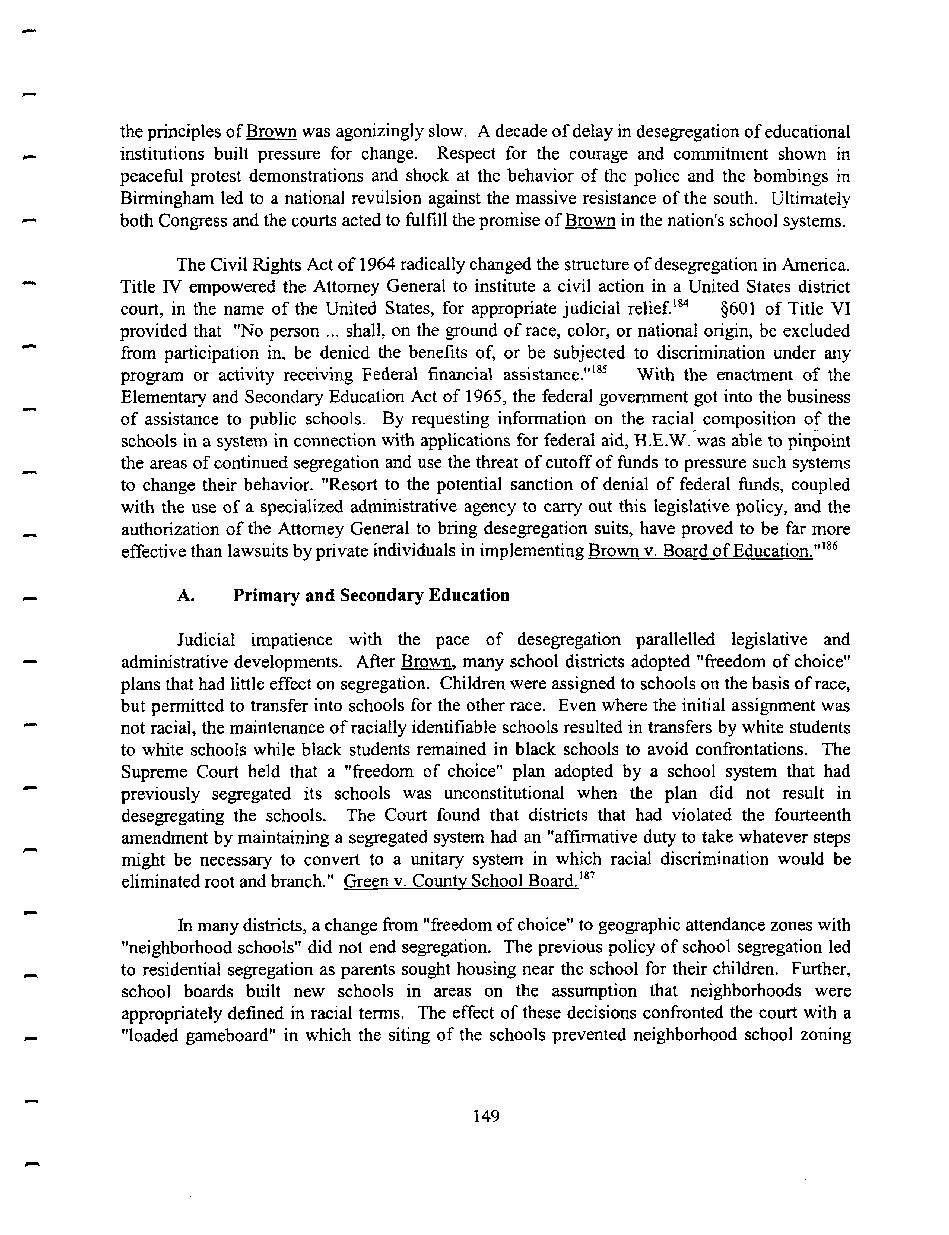|
the principles of Brown was agonizingly slow. A decade of delay in desegregation of educational
institutions built pressure for change. Respect for the courage and commitment shown in
peaceful protest demonstrations and shock at the behavior of the police and the bombings in
Birmingham led to a national revulsion against the massive resistance of the south. Ultimately
both Congress and the courts acted to fulfill the promise of Brown in the nation's school systems.
The Civil Rights Act of 1964 radically changed the structure of desegregation in America.
Title IV empowered the Attorney General to institute a civil action in a United States district
court, in the name of the United States, for appropriate judicial relief.184 §601 of Title VI
provided that "No person ... shall, on the ground of race, color, or national origin, be excluded
from participation in, be denied the benefits of, or be subjected to discrimination under any
program or activity receiving Federal financial assistance."185 With the enactment of the
Elementary and Secondary Education Act of 1965, the federal government got into the business
of assistance to public schools. By requesting information on the racial composition of the
schools in a system in connection with applications for federal aid, H.E.W. was able to pinpoint
the areas of continued segregation and use the threat of cutoff of funds to pressure such systems
to change their behavior. "Resort to the potential sanction of denial of federal funds, coupled
with the use of a specialized administrative agency to carry out this legislative policy, and the
authorization of the Attorney General to bring desegregation suits, have proved to be far more
effective than lawsuits by private individuals in implementing Brown v. Board of Education."186
A. Primary and Secondary Education
Judicial impatience with the pace of desegregation parallelled legislative and
administrative developments. After Brown, many school districts adopted "freedom of choice"
plans that had little effect on segregation. Children were assigned to schools on the basis of race,
but permitted to transfer into schools for the other race. Even where the initial assignment was
not racial, the maintenance of racially identifiable schools resulted in transfers by white students
to white schools while black students remained in black schools to avoid confrontations. The
Supreme Court held that a "freedom of choice" plan adopted by a school system that had
previously segregated its schools was unconstitutional when the plan did not result in
desegregating the schools. The Court found that districts that had violated the fourteenth
amendment by maintaining a segregated system had an "affirmative duty to take whatever steps
might be necessary to convert to a unitary system in which racial discrimination would be
eliminated root and branch." Green v. County School Board.187
In many districts, a change from "freedom of choice" to geographic attendance zones with
"neighborhood schools" did not end segregation. The previous policy of school segregation led
to residential segregation as parents sought housing near the school for their children. Further,
school boards built new schools in areas on the assumption that neighborhoods were
appropriately defined in racial terms. The effect of these decisions confronted the court with a
"loaded gameboard" in which the siting of the schools prevented neighborhood school zoning
149
�
|

